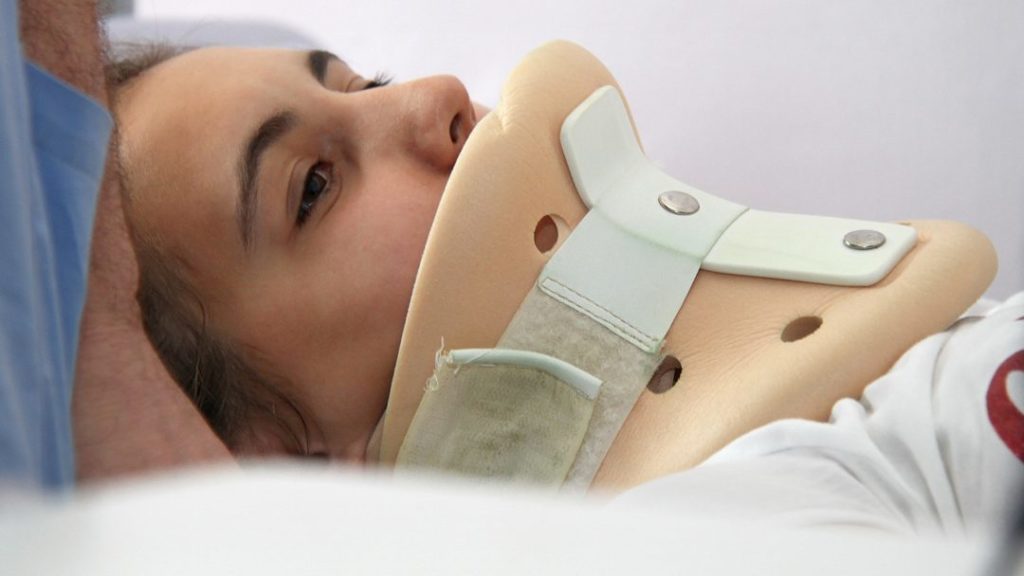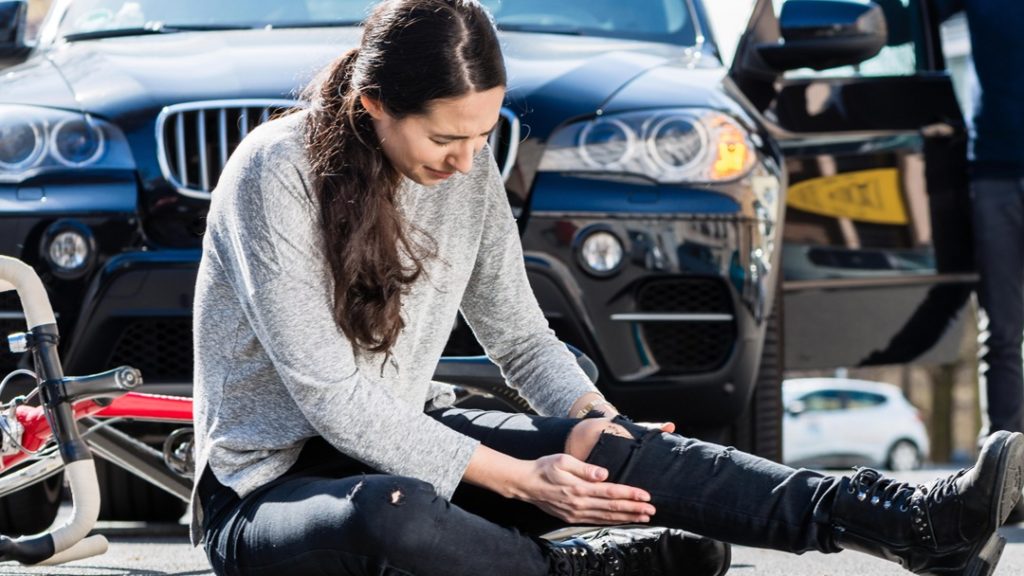
Who Pays For Accident Damages In A No Fault State?
Navigating the aftermath of a car accident is a daunting task, especially when it comes to understanding who is financially responsible for the damages incurred. In New York State, which operates under a no-fault insurance system, this process can be particularly complex. The “no-fault” label often raises more questions than it answers for those involved in a car accident.
The no-fault insurance concept is designed to streamline the claims process after an accident. Rather than determining who was responsible for the incident, each party files a claim with their own insurance company for medical expenses, lost earnings, and incidental costs resulting from the accident. This system aims to provide quick payments for injuries and other losses, without the need for lengthy and costly legal battles. However, it’s not without its intricacies and exceptions.
For residents of New York, comprehending no-fault laws is crucial. These laws not only impact how you file a claim but also dictate the extent of the coverage you can expect. With limits in place for what no-fault insurance covers, understanding these boundaries is essential in ensuring that you are fully aware of your rights and the protections available to you.
The aim of this article is to demystify the no-fault insurance system in New York. We will delve into the specifics of what no-fault insurance covers, including medical expenses, lost wages, and other expenses. We’ll also discuss the limits of this coverage, the critical role of legal services in navigating claims, and why having an attorney might be necessary when dealing with accident damages in a no-fault state.
The Kerner Law Group, P.C. is committed to providing clarity on these matters, ensuring that you are informed and prepared should you ever find yourself in the stressful situation of dealing with the fallout from a car accident.
Understanding No-Fault Insurance in New York
In the bustling streets of New York, where the unexpected can happen at any turn, drivers must navigate not only the traffic but also the rules of insurance coverage when accidents occur. No-fault insurance, a term commonly used yet often misunderstood, refers to a system designed to simplify the claims process following a vehicular incident. In essence, it allows for a driver to receive compensation from their own insurance company regardless of who caused the accident.
Personal Injury Protection (PIP), a cornerstone of no-fault insurance, is a mandatory coverage for all motorists in New York State. PIP is designed to cover medical costs, a portion of lost wages, and other incidental costs that arise as a direct result of an automobile accident. It’s a form of coverage that puts the well-being of individuals first, ensuring that their basic needs are met in the immediate aftermath of an accident without the need to establish fault, which can be a time-consuming and contentious process.
The coverage under PIP is fairly comprehensive but does come with its limitations. It generally includes all necessary medical and rehabilitation costs, a percentage of lost earnings (subject to a monthly maximum), and death benefits to the estate of a deceased accident victim. However, it’s important to note that PIP does not cover property damage or pain and suffering, and it is subject to policy limits that can be quickly exhausted in the case of severe auto accidents.
Filing a no-fault insurance claim in New York requires prompt action. The initial step is to notify your insurance carrier of the accident within a specified timeframe, typically 30 days. Following notification, you must submit a claim form, known as an NF-2 form, to your insurer. This form will ask for details about the accident and the nature of your injuries. Submitting this form promptly is crucial, as delays can jeopardize your ability to receive benefits.
Once the claim is filed, your insurer will evaluate it and provide compensation for covered expenses up to the policy’s limits. It’s worth noting that receiving no-fault benefits does not preclude the possibility of pursuing additional legal action, especially in cases where serious injury occurs or when PIP limits are exceeded.
As straightforward as the process may appear, it is often fraught with administrative hurdles and policy nuances that can make navigating the aftermath of an accident overwhelming. This is where the guidance of experienced legal professionals can be invaluable, helping to ensure that you receive the full benefits you’re entitled to under the law.
Medical Expenses and No-Fault Insurance
Under New York’s no-fault insurance, Personal Injury Protection (PIP) provides coverage for medical expenses after a car accident. It includes necessary doctor’s visits, hospital stays, medical procedures, and prescribed medications. Rehabilitation costs, like physical therapy, are also covered. However, PIP has its boundaries. The standard limit for PIP coverage is $50,000 per person, but this cap can quickly be reached with today’s high medical costs.
Certain treatments may not be covered under PIP, such as experimental procedures or non-emergency cosmetic surgeries.
When medical bills surpass the PIP limits, injured parties may face financial challenges. In such scenarios, they may turn to their health insurance for additional support or explore the option of suing the at-fault party if the injuries meet the “serious injury” threshold as defined by New York insurance law. This allows individuals to step outside the no-fault system and potentially recover costs that exceed their PIP coverage. Legal counsel can play a vital role in these situations, helping to navigate the complex interplay of health, auto, and liability insurance coverages.
Lost Wages Compensation in No-Fault Claims
In New York, no-fault insurance includes provisions for lost wages, offering financial relief when an accident prevents you from working. PIP coverage typically reimburses 80% of lost earnings, capped at $2,000 per month. The calculation is based on your income prior to the accident, verified through documentation like pay stubs or employer verification. You will need medical disability certificates by your treating doctor setting forth that you are unable to work due to the injuries you sustained.
Despite this safety net, the limit can fall short for many, especially if the injured party had a higher income or the incapacity to work extends beyond the coverage period. In cases where PIP falls short, individuals can use disability benefits, if available, or possibly file a lawsuit against the at-fault party for additional compensation, provided their injuries qualify as serious under the law.
When lost wages exceed PIP coverage, it’s important to consult with legal professionals. They can assist in exploring all avenues for compensation, including potential litigation against the party at fault, to ensure that your financial stability is preserved while you recover from your injuries.
Property Damage and Liability in No-Fault States
In no-fault states like New York, the no-fault system primarily covers personal injury, not property damage. Property damage claims are generally processed through the at-fault driver’s property damage liability insurance. This is where fault does come into play, and the at-fault party bears the financial responsibility for repairs or replacement of vehicles.
For your own vehicle’s damages, collision insurance can provide coverage, regardless of fault. If you’re not at fault, you can file a property damage claim directly with the other driver’s insurance. The process involves submitting evidence of the damage, such as repair estimates or photos, and the insurance company will assess the claim based on this information.
Navigating Exceptions in No-Fault Claims
No-fault insurance in New York is designed to be straightforward, but exceptions do arise that necessitate careful navigation. For instance, if you’re driving a company car, the vehicle’s commercial insurance, rather than personal PIP, often handles the claim. Accidents involving uninsured or underinsured drivers also stand as a notable exception. In these cases, your Uninsured/Underinsured Motorist (UM/UIM) coverage becomes pivotal. It steps in to provide compensation for injuries when the at-fault driver lacks adequate coverage.
These exceptions can significantly alter the claims process. With company vehicles, you may need to coordinate with your employer for claim filing. When dealing with UM/UIM claims, timely notification to your insurer and meticulous documentation are crucial, as these cases can become complex and contentious.
Understanding how to handle these exceptions is essential for ensuring that you’re not left vulnerable to uncovered losses. Legal expertise can be instrumental in managing these scenarios, ensuring that all appropriate steps are taken to secure the benefits you’re entitled to under your insurance policy.
When to Step Outside the No-Fault System
While no-fault insurance streamlines the compensation process for car accident victims in New York, there are circumstances where stepping outside this system and pursuing legal action is not only possible but necessary. This is typically when the injuries sustained are severe, permanent, or result in significant pain and suffering, surpassing the state’s legally defined threshold for serious injury.
New York law permits you to file a lawsuit against the at-fault driver if you’ve suffered dismemberment, significant disfigurement, a fracture, or a permanent loss of use of a body organ, member, function, or system, among other specified conditions. Litigation may lead to compensation for pain and suffering in addition to the benefits you receive through your no-fault insurance benefits.
In these high-stakes situations, where your potential recovery could go beyond the limits of PIP, the guidance of an attorney is crucial. Legal advice can help you understand if your injuries qualify for additional compensation, navigate the complexities of filing a lawsuit, and work to secure the full compensation you’re due for your losses.
The Role of Legal Services in No-Fault Claims
Legal assistance plays a critical role in maximizing the benefits of no-fault claims. An attorney’s expertise helps ensure that all potential sources of compensation are identified and pursued. Lawyers can help accurately document injuries and losses, negotiate with insurance companies, and prevent clients from settling for less than what their claims are worth.
The process of legal consultation typically begins with an evaluation of your case, where a lawyer will review the details of the accident and your insurance coverage. Representation can involve managing all aspects of the claim process, from completing paperwork to representing your interests in court if necessary.
Case studies have repeatedly shown the benefits of hiring an experienced personal injury car accident attorney. For instance, individuals who initially received minimal offers from insurance companies have, with legal representation from personal injury law firms, secured settlements that more accurately reflected the long-term costs of their injuries. These outcomes not only highlight the value of legal expertise but also underscore the importance of professional advocacy in the legal process.
How to File a Claim in New York
Filing a no-fault claim in New York requires a methodical approach. Here’s a concise guide:
- Notify Your Insurer: Inform your insurance provider of the accident as soon as possible, ideally within 30 days.
- Complete the NF-2 Form: Fill out the New York Motor Vehicle No-Fault Insurance Law Application (NF-2 form) with detailed information about the accident and injuries.
- Gather Documentation: Compile medical records (and medical bills), accident reports, and proof of lost wages. These will support your claim for medical expenses, lost income and other out of pocket expenses.
- Submit the Claim: Send the completed NF-2 form and all accompanying documentation to your insurer within 30 days of the accident for medical expenses.
- Follow Up: Keep a record of all correspondence and maintain contact with your insurance adjuster to ensure your claim is being processed.
When dealing with insurance companies, be thorough yet cautious in communication—only discuss facts, not opinions or feelings about the accident. It’s often wise to consult an attorney before giving detailed statements or signing any settlements, as they can provide guidance on securing the best possible outcome for your claim.
Frequently Asked Questions
- What exactly does no-fault auto insurance cover in New York? No-fault insurance, or Personal Injury Protection (PIP), covers medical expenses, a portion of lost wages, and other reasonable and necessary expenses related to injuries from a car accident, regardless of who caused it.
- Can I sue for additional damages in a no-fault state like New York? Yes, you can sue for additional damages if you suffer serious injuries that meet the state’s legal threshold, such as significant disfigurement or a broken bone, or if economic losses exceed your PIP coverage.
- Does no-fault insurance cover property damage to my vehicle? No, property damage is not covered under PIP. You would file a claim against the at-fault driver’s property damage liability insurance for vehicle repairs or turn to your collision coverage.
- What should I do if my medical bills exceed the no-fault insurance limits? If your medical bills exceed PIP limits, you can turn to your health insurance for coverage or pursue legal action against the at-fault driver if your injuries are severe enough or if you are experiencing emotional distress.
- How long do I have to file a no-fault insurance claim in New York? You have 30 days from the date of the accident to notify your insurance company. Medical treatment bills must be submitted within 45 days of treatment, and lost wage claims must be filed within 90 days of the accident.
These FAQs provide a basic framework for understanding the nuances of no-fault car insurance claims in New York. For specific advice and assistance with individual cases, or if you are unclear as to the type of auto insurance you have, legal counsel should be sought.
Conclusion
Navigating the terrain of no-fault insurance in New York State can be as complex as the bustling intersections of its cities. This article has walked you through the essential aspects of no-fault insurance, from the coverage of medical expenses and lost wages to the nuances of property damage claims and the critical exceptions that might arise. We’ve underscored the scenarios in which stepping outside the no-fault system is not only possible but necessary—particularly when bodily injuries are severe and the financial stakes are high.
Understanding no-fault laws is vital—it influences the decisions you make post-accident and the outcomes of your accident claims. Having the right information at your fingertips helps ensure that you receive the benefits you deserve without undue stress or delay.
If you’re facing the aftermath of a car accident, don’t navigate these complex waters alone. Kerner Law Group, P.C. are equipped to provide the guidance and advocacy needed to secure your rightful compensation. We encourage you to reach out for a consultation with a personal injury lawyer, where our commitment to personalized and professional legal support can make all the difference in your no-fault claim.
Appendix: Additional Resources and Legal Support
For those seeking more information or legal options on no-fault insurance, a personal injury claim, or related legal matters, the following resources can provide further insight:
- New York State Department of Financial Services: No-Fault Resource
- New York State’s No-Fault Auto Insurance Law
To explore detailed guides and case studies, visit the client’s knowledge base:
Should you require personalized legal advice or wish to discuss your situation with a personal injury attorney, please contact:
Kerner Law Group, P.C.
Address: 269 W 231st St,
Bronx, NY 10463
Phone: (718) 796-7900
At Kerner Law Group, P.C., we understand the intricacies of navigating a no-fault accident in an insurance state like New York. Our team of expert accident attorneys, including seasoned auto accident attorneys, is ready to provide comprehensive support. From personal injury lawsuits to ensuring you fully utilize your Personal Injury Protection (PIP) insurance, we are committed to advocating for your insurance benefits.
We recognize that the aftermath of an accident can be overwhelming, and the question of insurance premiums and how they may be affected post-accident is a common concern. Additionally, in the unfortunate event of fatal accidents, we guide our clients through the process of claiming funeral expenses. Our legal expertise extends to complex concepts such as comparative negligence and contributory negligence, ensuring the injured person receives fair treatment under the law.
When you need guidance through the maze of no-fault insurance claims, Kerner Law Group, P.C. stand ready to protect your rights and help secure the compensation you deserve.


